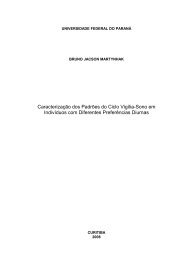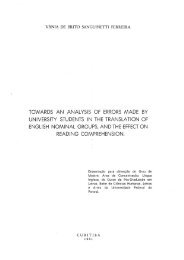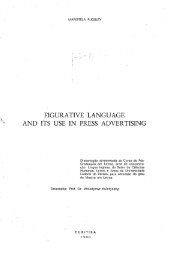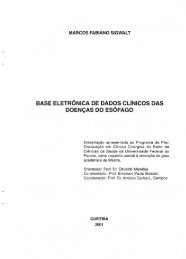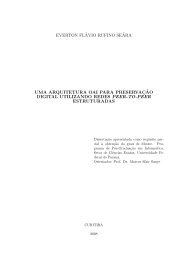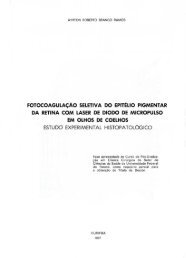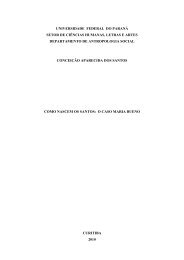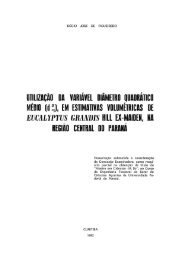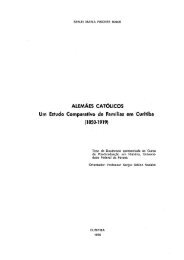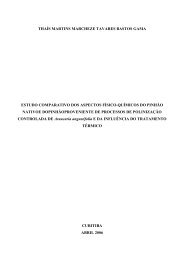TESE CARON-corrig. pos defesa- 08-12-10 -PDF.pdf - Universidade ...
TESE CARON-corrig. pos defesa- 08-12-10 -PDF.pdf - Universidade ...
TESE CARON-corrig. pos defesa- 08-12-10 -PDF.pdf - Universidade ...
You also want an ePaper? Increase the reach of your titles
YUMPU automatically turns print PDFs into web optimized ePapers that Google loves.
ABSTRACT<br />
Influenza is the most frequently studied and anticipated re-emerging disease in<br />
the whole world, mainly because of the historical significance of its occurrences.<br />
The virus that causes it belongs to the Orthomyxoviridae family and infects<br />
many animal species. It is present in aquatic birds in the whole world and finds<br />
in pigs the <strong>pos</strong>sibility of undergoing intense mutations, thus raising the concern<br />
about its being a source for potential pandemic viruses. Monitoring viral<br />
circulation is a necessary strategy for an early identification of outbreaks and for<br />
guiding efficient control measures to ensure not only human safety – minimizing<br />
contamination risks – but also the excellence of Brazil as a major poultry and<br />
swine producing and exporting country. The present work was carried out<br />
aiming at contributing to the knowledge of prevalence rates and subtypes of the<br />
virus present in pigs. In order to answer this question, 675 samples of sera from<br />
5327 total pigs were analyzed to study antibodies and to determine the<br />
seroprevalence against subtype H3N2 influenza by the hemagglutination<br />
inhibition test. The animals derived from different areas and growing systems in<br />
the State of Parana – Brazil. Another step in the study sought to identify the<br />
presence of the virus in tissue samples from the respiratory tract of pigs in the<br />
slaughterhouse. First the inoculation of the material was performed in<br />
embryonated eggs, followed by its molecular identification by RT-PCR, for gene<br />
7, which encodes protein M - well preserved in type A viruses. Evaluation<br />
showed that the highest prevalence occurs when there is a high population<br />
density favoring the maintenance of the virus in the population (24% to farm<br />
animals and 3% to run). Likewise, regions characterized by colder climate<br />
proved to predis<strong>pos</strong>e the infection in swine more than other regions (ranged of<br />
2,5% at 45%). Five out of the seventy studied samples were <strong>pos</strong>itive for the<br />
type A virus. The presence of virus in 7,15% of samples denoting the presence<br />
of the virus in swine livestocks studied, reinforcing the need for active<br />
monitoring using sensitive tests that allow managing the potential occurrence<br />
risk of the disease in Brazil.<br />
Key-words: influenza, sero-epidemiology, RT-PCR, H3N2, population density.<br />
4



